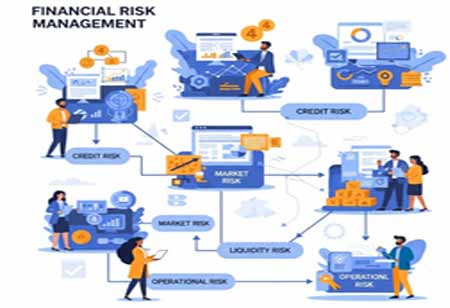CLOSE
Specials
- Trading Solutions APAC
- Wealth Management MENA
- CPA Firms Canada
- Financial Risk Management APAC
- Investment Banking APAC
- Corporate Advisory APAC
- Regtech APAC
- Escrow Services
- Digital Banking Latam
- Investment Advisory APAC
- Treasury Management Europe
- RegTech Europe
- Financial Risk Management Europe
- Mortgage Broker
- Financial Licensing Europe
- RIA Advisory Europe
- FinTech Canada
- Financial Asset Management APAC
- Financial Health Europe
- Trading
- Investment Services Europe
- Lending Mangment Latam
- Payment Solution Europe
- Broker Dealer Firms Canada
- Alternative Investments Canada
- Financial Fraud
- Investment Management Latam
- Investment Banking Canada
- Lending Management
- Payment Solution
- Proprietary Trading Europe
- Wealth Management
- FinTech
- Financial Brokerage Firm APAC
- Investment Advisory Europe
- Claim Adjusting
- Claim Adjusting APAC
- Mergers and Acquisitions Consulting APAC
- Equipment Financing
- CPA Firms
- Mergers and Acquisitions Consulting Canada
- Investment Services
- Valuation Services Canada
- Wealth Management APAC
- Broker Dealer Firms
- Debt Collection Agencies
- Mergers and Acquisitions Consulting
- FinTech Europe
- Fintech Latam
- Financial Planning / Retirement
- Investment Management
- Financial Compliance
- Payment and Card Latam
- Financial Marketing
- Investment Services Latam
- Digital Insurance Europe
- Alternative Investments
- Trading Solutions Europe
- Tax Advisory Canada
- Mergers and Acquisitions Consulting Latam
- Wealth Management Latam
- Digital Banking Europe
- Business Loan
- Financial Portfolio Management Canada
- Financial Restructuring Europe
- Mergers and Acquisitions Consulting Europe
- Wealth Management Europe
- Debt Collection Agencies Europe
- CFO Services
Weekly Brief
×Be first to read the latest tech news, Industry Leader's Insights, and CIO interviews of medium and large enterprises exclusively from Financial Services Review
Thank you for Subscribing to Financial Services Review Weekly Brief
Strengthening Europe
Financial risk management in Europe improves economic stability, strategic clarity, and decision-making by identifying and mitigating financial threats, empowering institutions, firms, and policymakers.

By
Financial Services Review | Tuesday, November 04, 2025
Stay ahead of the industry with exclusive feature stories on the top companies, expert insights and the latest news delivered straight to your inbox. Subscribe today.
Fremont, CA: Financial risk management in Europe is crucial for economic stability and strategic clarity. It identifies and mitigates financial threats to maintain stability, competitiveness, and compliance, reduces losses and enables smarter decision-making in the complex financial landscape.
Enhanced Economic Stability
A significant benefit of financial risk management in Europe is its ability to contribute to broader economic stability. With diverse financial systems spread across the continent, risk exposure varies significantly across industries and nations. Managing these risks effectively helps avoid sharp disruptions in capital flows, credit availability, and investment patterns. Governments and financial institutions that embed risk frameworks into their systems are better positioned to withstand economic shocks from market volatility, geopolitical tensions, or internal disruptions.
Financial risk management helps institutions prepare for adverse scenarios by carefully monitoring interest rate movements, exchange rate fluctuations, and liquidity positions. It also supports regulatory compliance by aligning internal policies with national and EU-wide financial directives. This alignment fosters transparency, improves investor confidence, and strengthens the resilience of public and private financial sectors. Without sound risk management, even minor inefficiencies can cascade into broader crises, threatening employment, growth, and the sustainability of public finance.
Improved Strategic Decision-Making
Financial risk management also empowers European firms and policymakers to make more informed and strategic decisions. By quantifying risks, organizations gain a clearer picture of the potential outcomes associated with their actions. This enables them to allocate capital more efficiently, structure their portfolios wisely, and choose growth opportunities with a balanced risk-reward profile.
For multinational entities operating across borders, risk management becomes even more pronounced. Different regulatory environments, currency risks, and varying degrees of market maturity can introduce complexity. Risk management strategies enable these entities to hedge their exposure and tailor their operations accordingly. This agility protects against financial loss and enhances long-term planning and investment strategy.
On a national level, financial risk management assists policymakers in framing budgets, designing monetary interventions, and managing public debt. It allows for better forecasting and contingency planning, essential for maintaining fiscal health and avoiding sudden funding gaps. When institutions are perceived to manage risk well, they usually benefit from lower borrowing costs, greater access to funding, and stronger partnerships within the financial ecosystem.
Risk management contributes to a more predictable operating environment in sectors like real estate, banking, and insurance, each sensitive to economic cycles. This predictability attracts domestic and foreign investors, fostering innovation and supporting infrastructure development. A well-established risk culture encourages accountability and responsible behavior at all levels of an organization, which is crucial for long-term sustainability.

Copyright © 2025 Financial Services Review. All rights reserved






